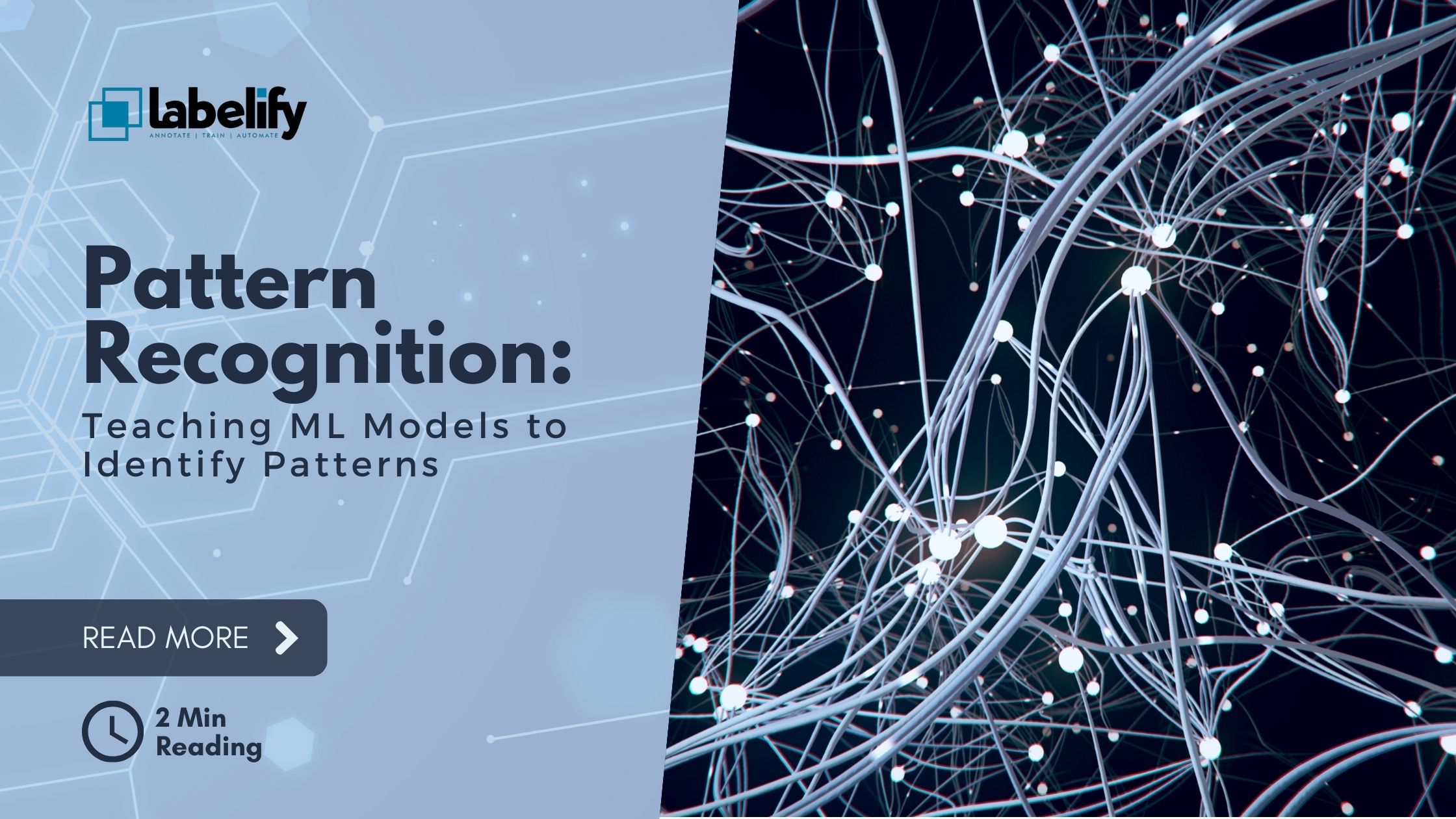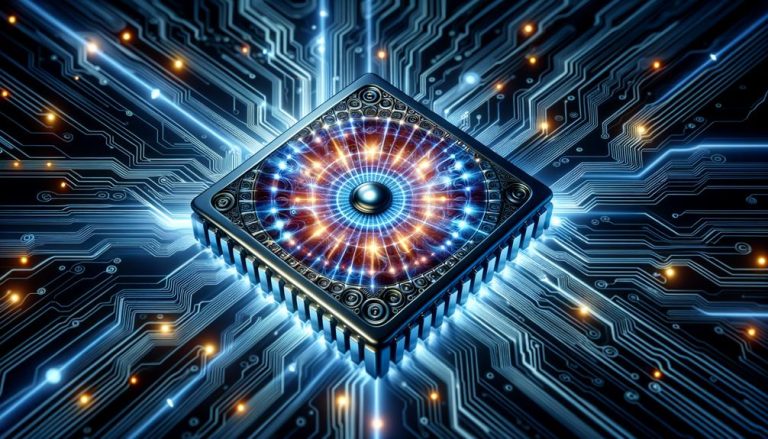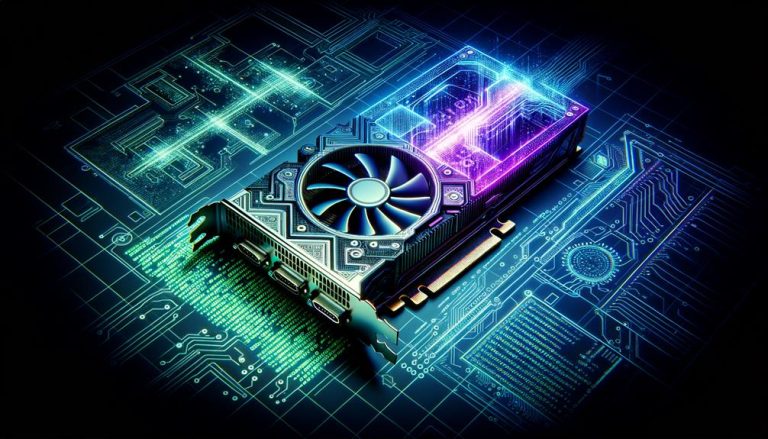Pattern recognition, a fundamental aspect of machine learning, holds immense significance across various industries and applications. By analyzing data and identifying patterns, this cognitive process enables classification, clustering, and abstraction.
With advancements, pattern recognition can now recognize obscured patterns and extract features from input data. Although challenges like data quality and training requirements persist, pattern recognition's benefits in classification, object detection, and prediction are undeniable.
This article delves into the basics, models, techniques, applications, challenges, and real-world examples of pattern recognition in machine learning.
Key Takeaways
- Pattern recognition is a cognitive process that matches information with stored data in the brain.
- Pattern recognition in machine learning matches incoming data with data in a database.
- Pattern recognition involves identifying common characteristics in data and can be used for text annotation.
- Different types of pattern recognition models, such as statistical, syntactic, and neural, are used in machine learning.
The Basics of Pattern Recognition
Pattern recognition is the fundamental process of identifying and categorizing data patterns in machine learning. It involves the use of pattern recognition techniques and pattern matching algorithms to analyze and interpret data.
Pattern recognition techniques encompass a wide range of methods, such as statistical analysis, neural networks, and deep learning models. These techniques allow machines to recognize and understand patterns in various types of data, including images, text, and speech.
Pattern matching algorithms, on the other hand, help in finding similarities and correspondences between patterns. They enable machines to compare and match patterns to known patterns stored in a database, facilitating accurate classification and prediction.
Types of Pattern Recognition Models
Building upon the basics of pattern recognition, the discussion now shifts to exploring the various types of models utilized in this field.
Classification algorithms play a crucial role in pattern recognition, as they enable the categorization of data into different classes based on their features. These algorithms learn from training data to make predictions or assign labels to new data points.
Feature extraction techniques also play a significant role in pattern recognition models. These techniques involve extracting relevant features from the input data that contribute to the abstraction and classification of patterns. By identifying and representing important characteristics, feature extraction techniques enhance the accuracy and efficiency of pattern recognition models.
The combination of classification algorithms and feature extraction techniques enables the development of powerful and effective pattern recognition models that can handle complex data and make accurate predictions.
Data Processing and Analysis in Pattern Recognition
Data processing and analysis are essential components of pattern recognition in machine learning. To effectively recognize patterns, the input data needs to undergo preprocessing to ensure its quality and suitability. This involves cleaning the data, handling missing values, and normalizing the features.
Once the data is preprocessed, feature extraction techniques are applied to identify the most relevant characteristics of the data. Features can be extracted using various methods such as dimensionality reduction, transformation, or selection. These extracted features contribute to the abstraction and classification of patterns.
Common Techniques in Pattern Recognition
The effective recognition of patterns in machine learning relies on employing common techniques that enhance the accuracy and efficiency of pattern recognition models. Two key techniques used in pattern recognition are supervised learning and unsupervised learning.
Supervised learning involves training a model using labeled data, where the inputs are paired with corresponding outputs. The model learns to map inputs to outputs and can then classify new, unseen data based on this learned mapping. This technique is widely used in applications such as image and speech recognition.
On the other hand, unsupervised learning involves training a model on unlabeled data, without any predefined output labels. The model learns to identify patterns and structures in the data, clustering similar data points together. This technique is useful for tasks such as anomaly detection and data exploration.
Applications of Pattern Recognition in Machine Learning
Applications of Pattern Recognition in Machine Learning extend beyond image and speech recognition, encompassing a wide range of domains and industries. The role of pattern recognition in image recognition is particularly significant, as it enables machines to identify and classify visual patterns with high accuracy. However, pattern recognition in machine learning has limitations that should be acknowledged. These limitations include the need for large amounts of training data, issues with data quality, and long training times.
Despite these challenges, pattern recognition has proven to be valuable in various applications. Here are three examples:
- Medical Diagnosis: Pattern recognition techniques can be used to analyze medical images and detect patterns associated with diseases or abnormalities.
- Fraud Detection: By identifying patterns in financial transactions, machine learning algorithms can help detect fraudulent activities and prevent financial losses.
- Natural Language Processing: Pattern recognition plays a crucial role in language understanding, enabling machines to analyze and interpret human language for tasks like sentiment analysis and chatbot interactions.
These examples demonstrate the versatility and potential of pattern recognition in machine learning, highlighting its impact across diverse fields and its ability to drive innovation and liberation.
Challenges in Pattern Recognition
One of the major challenges in pattern recognition is the need for large amounts of training data. Machine learning algorithms rely heavily on data to learn and recognize patterns accurately. However, obtaining high-quality training data can be a daunting task.
Data quality challenges, such as incomplete or noisy data, can hinder the performance of pattern recognition models. Additionally, training data requirements can be demanding, especially when dealing with complex patterns or when the available data is limited. Collecting and labeling sufficient training data can be time-consuming and costly.
Addressing these challenges requires innovative solutions, such as data augmentation techniques or transfer learning, to maximize the effectiveness of pattern recognition algorithms. Furthermore, advancements in data collection and processing technologies can help overcome these challenges and improve the accuracy and efficiency of pattern recognition systems.
Examples of Pattern Recognition in Real-world Scenarios
Pattern recognition plays a crucial role in various real-world scenarios by identifying and categorizing patterns in data. Here are three examples of how pattern recognition is applied in different fields:
- Pattern Recognition in Medical Diagnosis:
Pattern recognition techniques are used to analyze medical data such as patient symptoms, test results, and medical imaging. By identifying patterns in this data, doctors can make accurate diagnoses and predict patient outcomes. For example, machine learning algorithms can analyze patterns in medical images to detect early signs of diseases like cancer, allowing for early intervention and treatment.
- Pattern Recognition in Financial Forecasting:
Financial markets are complex, and predicting market trends is challenging. Pattern recognition algorithms can analyze historical financial data to identify patterns and trends that can help in making informed investment decisions. By recognizing patterns in market behavior, these algorithms can generate forecasts for stock prices, exchange rates, and other financial indicators, assisting investors in making profitable trades.
Frequently Asked Questions
How Does Pattern Recognition in Machine Learning Differ From Pattern Recognition in the Human Brain?
Differences and similarities exist between pattern recognition in machine learning and the human brain. While both involve matching incoming data with stored information, the processes differ in their approach.
Machine learning algorithms use statistical techniques and data analysis to recognize patterns, whereas the human brain relies on cognitive processes.
Additionally, machine learning requires large amounts of training data, whereas the human brain can recognize patterns with limited exposure.
Despite these differences, both systems contribute to the identification and understanding of patterns in data.
What Are Some Limitations of Pattern Recognition Models in Machine Learning?
Some limitations of pattern recognition models in machine learning include:
- The challenges of acquiring and preprocessing large amounts of training data.
- Issues with data quality.
- Long training times.
These limitations can hinder the efficiency and accuracy of pattern recognition algorithms.
However, ongoing research and advancements in machine learning techniques are continuously improving these models. Innovations such as transfer learning and deep learning architectures are being explored to address these limitations and enhance the capabilities of pattern recognition in machine learning.
Can Pattern Recognition Be Used to Analyze Data That Is Constantly Changing or Evolving?
Pattern recognition can be used to analyze data that is constantly changing or evolving through real-time data analysis and adaptability in pattern recognition. By continuously updating the pattern recognition models and algorithms, it is possible to detect and classify new patterns as they emerge in the evolving data.
This enables the identification of trends, anomalies, and insights in dynamic datasets, allowing for timely decision-making and proactive actions. The ability of pattern recognition to handle changing data makes it a valuable tool in various fields, including finance, healthcare, and cybersecurity.
How Do Pattern Recognition Models Handle Outliers or Anomalies in the Data?
Handling outliers and anomaly detection are important aspects of pattern recognition models. These models employ various techniques to identify and handle outliers in the data.
Robust statistical methods, such as the use of median instead of mean, are often used to mitigate the influence of outliers. Additionally, machine learning algorithms can be trained to detect and classify anomalies based on deviations from the expected patterns.
What Are Some Emerging Trends or Advancements in Pattern Recognition in Machine Learning?
Emerging trends and advancements in pattern recognition in machine learning include:
- The increasing use of unsupervised learning techniques, which allow the model to learn from unlabeled data and discover hidden patterns.
- The integration of deep learning algorithms, which enable the model to automatically learn hierarchical representations of data.
These advancements have the potential to enhance the accuracy and efficiency of pattern recognition models, leading to more precise and innovative applications in various domains.
Conclusion
In conclusion, pattern recognition in machine learning plays a fundamental role in various industries and applications. It enables the classification, clustering, and abstraction of patterns by identifying common characteristics and regularities in data.
With the development of advanced models and techniques, pattern recognition can now recognize partially hidden patterns and extract features from input data. However, challenges such as the need for large training data and issues with data quality persist.
Nonetheless, pattern recognition continues to be a powerful tool with diverse applications in fields like stock market prediction, user data analysis, and optical character recognition.




